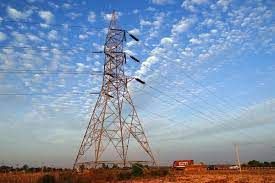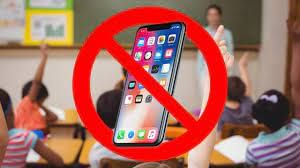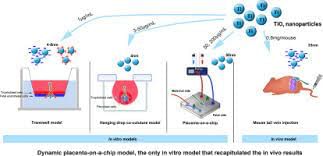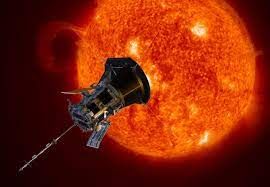UPSC Daily Current Affairs- 12th August 2023 | Current Affairs & Hindu Analysis: Daily, Weekly & Monthly PDF Download
| Table of contents |

|
| National Social Assistance Programme (NSAP) |

|
| Niger |

|
| PUShP portal |

|
| Smartphone Ban in Schools |

|
| Bandhavgarh Tiger Reserve |

|
| Placenta on chip |

|
| Parker Solar Probe |

|
GS-II
National Social Assistance Programme (NSAP)
Subject: Government Schemes

Why in News?
Around Rs 79 crore was transferred to ineligible beneficiaries under the National Social Assistance Programme (NSAP) between 2017 and 2021.
Background:-
- An audit by the Comptroller and Auditor General of India (CAG) has revealed the information regarding the transfers.
About National Social Assistance Programme (NSAP):-
- Started: 1995.
- Ministry: Ministry of Rural Development
- Objective: to provide financial assistance to Below Poverty Line (BPL) individuals, elderly, widows, and persons with disabilities.
- Significance: It represents a significant step towards the fulfillment of the Directive Principles in Article 41 of the Indian Constitution.
Salient Features of NSAP:-
- It is a Centrally Sponsored Scheme.
- Centrally Sponsored Schemes: schemes that are implemented by state governments of India but are largely funded by the Central Government with a defined State Government share.
- It provides financial assistance to Below Poverty Line (BPL) individuals, the elderly, widows and persons with disabilities, and bereaved families on the death of a primary breadwinner, in the form of social pensions.
Components of NSAP:-
- At its inception, NSAP had three components:-
- National Old Age Pension Scheme (NOAPS),
- National Family Benefit Scheme (NFBS) and
- National Maternity Benefit Scheme (NMBS).
- The National Maternity Benefit Scheme (NMBS) was subsequently transferred to the Ministry of Health and Family Welfare in 2001.
- Presently, NSAP comprises five schemes:-
- Indira Gandhi National Old Age Pension Scheme (IGNOAPS),
- Indira Gandhi National Widow Pension Scheme (IGNWPS launched in 2009),
- Indira Gandhi National Disability Pension Scheme (IGNDPS launched in 2009),
- National Family Benefit Scheme (NFBS) and
- Annapurna (launched in 2000).
- Eligibility and scale of assistance:-
IGNOAPS:
- The eligible age for IGNOAPS is 60 years.
- The pension is Rs 200 per month for persons between 60 – 79 years.
- For persons who are 80 years and above the pension is Rs 500/ – pm.
IGNWPS:
- The eligible age is 40 years and the pension is Rs 300 pm.
- After attaining the age of 80 years, the beneficiary will get Rs 500/ – pm.
IGNDPS:
- The eligible age for the pensioner is 18 years and above and the disability level has to be 80% (Dwarfs are eligible).
- The amount is Rs 300 pm and after attaining the age of 80 years Rs 500/ – pm.
NFBS:
- Rs 20000/ – will be given as a lump sum assistance to the bereaved household in the event of the death of the breadwinner.
Annapurna Scheme:
- 10 kgs of food grains (wheat or rice) is given per month per beneficiary.
- The scheme provides food security for those eligible old-aged persons who are not covered by the IGNOAPS.
Source: Down to Earth
Niger
Subject: International

Why in News?
India's Ministry of External Affairs (MEA) recently urged Indian nationals to leave Niger, following a military coup that deposed the democratically elected President.
About Niger:
- Niger, officially the Republic of Niger, is a landlocked sub-Saharan country in western Africa.
- Bordering Countries: It is bounded on the northwest by Algeria, on the northeast by Libya, on the east by Chad, on the south by Nigeria and Benin, and on the west by Burkina Faso and Mali.
- The country takes its name from the Niger River, which flows through the southwestern part of its territory.
- Capital: Niamey
- Languages:
- The official language of Niger is French, due to its colonial history.
- The main national languages are Arabic, Djerma-Sonhraï, Gourmantchéma, Hausa, Kanouri, Fulfuldé, Tamacheq and Toubou.
- Relief: It tends to monotony in its features, is intersected by numerous depressions, and is dominated by arid highlands in the north.
- Independence:
- Niger gained independence from French colonial rule on August 3, 1960.
- Prior to independence, it was a part of French West Africa.
- Political System:
- It is a semi-presidential republic with a multi-party system.
- The President is the head of state and holds significant executive powers.
- The Prime Minister is the head of government and is appointed by the president.
Source: The Hindu
PUShP portal
Subject: Governance

Why in News?
Recently, the National Power Committee (NPC) favored offering incentives for buying & selling power on the PUShP portal.
About the PUShP portal:-
- Launched:
- Ministry: Ministry of Power.
- Objective: to enhance power availability during peak demand periods by enabling certain categories of sellers to offer power at prices surpassing the Rs 12 per unit ceiling.
- It is a national-level generating capacity utilization mechanism to help States, which are facing power cuts, buy power.
- The tariffs are regulated and determined by the concerned regulatory commissions.
- It facilitates the submission of surplus power availability by power distribution companies (DISCOMs) across various time blocks, days, or months.
- DISCOMs in need of power can requisition the surplus power indicated on the portal.
Transaction mechanism:-
- The new buyer acquires the surplus power and pays both variable charge (VC) and fixed cost (FC) as determined by Regulators.
- Upon reassignment, the original beneficiary relinquishes the right to recall, transferring the entire FC liability to the new beneficiary.
Benefits:-
- Reduces fixed cost burden on DISCOMs.
- Maximizes the utilization of available generation capacity.
Progress so far:-
- It has seen 17 States utilizing it.
- So far, 14 requests have been processed and the power has been reallocated to the new beneficiaries.
Source: Business Line
Smartphone Ban in Schools
Subject: Governance

Why in News?
Recently, UNESCO recommended a universal ban on the usage of smartphones in schools.
United Nations Educational, Scientific and Cultural Organization (UNESCO) Recommendation:
- Caution against Uncritical Embrace of Digital Technology: UNESCO has warned against blindly adopting digital products in education, pointing out that there is limited robust evidence to support the benefit of digital technology in learning.
- Negative Link Between Screen Time and Education: The study reveals that higher screen time among young people aged 2 to 17 is associated with poorer well-being, reduced curiosity, self-control, and emotional stability, along with higher levels of anxiety and depression diagnoses.
- Smartphone Ban in Schools: UNESCO’s report endorses the idea of banning smartphones in schools, especially when technology integration fails to improve learning or adversely affects student well-being.
- Concerns About Digital Infrastructure Costs and Inequality: The cost of moving to basic digital learning in low-income countries and connecting all schools to the internet in lower-middle-income countries would add 50% to their current financing gap for achieving national SDG 4 targets.
- Children’s Privacy and Data Protection: The report underscores the risk to children’s privacy posed by indiscriminate use of digital technology in education.
- The report reveals that only 16% of countries guarantee data privacy in education by law.
Mobile and smartphone users in India:
- India has 1.2 billion mobile phone users and over 600 million smartphone users. That figure is expected to cross a billion by 2026, according to a Deloitte study, indicating that a future world will be dependent on these small devices.
- However, one place where smartphone usage has become controversial is the classroom.
Countries restricting mobile use in schools:
- In England, children are allowed to bring in their phones from about Year 4 and Year 5, but they will have to deposit their phones.
- In Finland, from about 12 years of age, they are allowed to bring their phones along with them and they are allowed to keep it in their hands even when the classes are run.
- Earlier, Australia had no restrictions, but post-COVID, looking at the mental well-being and the emotional well-being, at the behaviour problems, which have started; they have also brought in some kind of restrictions with regard to usage of smartphones inside the campuses.
- While India does not have a legal ban on smartphones in schools, state governments and school, administrations take their own call on the matter.
Arguments against using smartphones by students:
- Engagement on social media: Children studying in schools are getting too much engaged in social media, playing games leading to complete decline in their focus on academic tasks.
- UNESCO’s rationale: UNESCO has clearly warned against an uncritical rush towards embracing digital products in educational settings.
- There is little evidence of digital technology’s benefit in education. However, there is a clear threat also, with the report highlighting that mere proximity to a mobile device was found to distract students.
- This is more than sufficient for us to understand that mobile phones should not be allowed in the education system.
- Addiction and anxiety issues: Psychologists also advocate that mobile phones are addictive in nature, and can hinder concentration and social skills, and cause an increased number of anxiety and mental illness cases.
- Students are vulnerable to cyber bullying, comparisons, unrealistic standards, resulting in depression, feelings of inadequacy.
- Disparities among students: It might raise the disparities among students belonging to various socio-economic backgrounds, because students with access to the latest expensive devices could experience an advantage, while those with limited resources might feel left out or stigmatized.
- The presence of mobile phones also increases the risk of theft, and schools may struggle to manage security.
- Healthy learning: It is argued that we should promote more face-to-face interaction to maintain academic integrity and to foster a healthy learning atmosphere.
- Because in those times when there were no mobile phones in the class, then also learning happened.
Concern Raised on smartphones in School:
- Dangers and Alarming Research: Research from the London School of Economics suggests that not allowing mobile phones in schools enhances academic performance.
- Addictive nature of Mobile phones: Psychologists also raise concerns about the addictive nature of mobile phones, their potential to hinder concentration and social skills, and their contribution to increased anxiety and mental illness cases.
- Vulnerability to Cybercrime: Schools can be vulnerable to problems like cybercrime due to the presence of mobile phones, as they are seen as sensitive targets.
- Disparities in Socio-Economic Backgrounds: Potential disparities could arise due to varying access to smartphones among students from different socio-economic backgrounds.
- Students who cannot afford high-end smartphones may feel left out or stigmatized, affecting their confidence and overall engagement in learning activities.
Way Forward:
Digital technology, including artificial intelligence, should always be subservient to a human-centred vision of education, and never replace face-to-face interaction with teachers and neglect the social dimension of education. The digital revolution holds immeasurable potential but just as warnings have been voiced for how it should be regulated in society, similar attention must be paid to the way it is used in education.
Source: The Hindu
GS-III
Bandhavgarh Tiger Reserve
Subject: Environment and Ecology
Why in News?
A seven-month-old female tiger cub was found dead under suspicious circumstances at Bandhavgarh Tiger Reserve.
About Bandhavgarh Tiger Reserve:
- Location:
- It is located in the Umaria district of Madhya Pradesh.
- It is spread over the Vindhya hills.
- Bandhavgarh was declared a national park in 1968 and then became Tiger Reserve in 1993.
- It derives its name from the most prominent hillock in the area, which was said to be given by Hindu Lord Rama to his brother Lakshmana to keep a watch on Lanka. Hence the name Bandhavgarh (Sanskrit: Brother's Fort).
- It is known for the Royal Bengal Tigers.The density of the tiger population at Bandhavgarh is the highest known in India as well as in the world.
- Topography: Varies between steep ridges, undulating forests and open meadows.
- Flora:
- The vegetation of Bandhavgarh is specially filled with Sal forestin the valleys, and Bamboo stretches on the lower slopes of the region.
- Some of the most famous floral species include Saj (Terminaliatomentosa), Dhaora (Anogeissus latifolia), Tendu, Arjun (Terminalia arjuna), Amla (Emblica officinalis), Palas (Butea monosperma) etc.
- Fauna:
- The important prey species consists of chital, sambhar, barking deer, nilgai, chinkara, wild pig, chowsingha, langur and rhesus macaque.
- Dependent upon them are the major predators like tiger, leopard, wild dog, wolf and jackal.
Source: Indian Express
Placenta on chip
Subject: Science and Technology

Why in News?
Recently, researchers have developed devices called placenta-on-a-chip (POC).
About Placenta on chip:
- A bunch of devices mimicking the placenta at various stages of pregnancy can help in drug discovery, study of toxicity of chemicals like caffeine, and understanding the effects of conditions such as preeclampsia and diabetes mellitus during pregnancy.
- In pregnancy, the placenta shields the baby from harmful drugs and chemicals. But some can still cross this barrier and cause harm to the baby in the womb.
- Thus, pregnant women are not given most medications and they continue to suffer. Determining which medicines can be given during pregnancy that would not cross the placenta is a daunting task.
- Researchers have used microfluidic technology which can integrate processes, to create an environment that represents basic organ structure and functions of the placenta.
- The placenta in a lab dish developed by the team allows different cells to interact with each other, incorporate mechanical properties and mimic the blood flow, which closely resembles the in-vivo condition.
- Among various available POC models, these devices are more suitable for probing placental development as well as diseases caused due to defects in the placenta. Also, patient-specific sample screening will be possible for personalised medicine.
Advantage of placenta-on-chip
- It will enable early detection of adverse conditions and allows researchers and healthcare professionals to observe, study, and identify potential issues that may arise during pregnancy.
- It enables the study of placental function, detection of complications, personalized medicine, and the development of new therapies.
Source: The Hindu
Parker Solar Probe
Subject: Science and Technology

Why in News?
NASA’s Parker Solar Probe recently executed a short maneuver that kept the spacecraft on track to reach the aim point for the mission’s sixth Venus flyby.
About Parker Solar Probe:
- It is a NASA spacecraft designed to study the Sun and its atmosphere.
- It was launched on August 12, 2018, from Cape Canaveral Air Force Station, Florida, and is currently orbiting the Sun in a highly elliptical orbit that takes it closer to the Sun than any previous spacecraft.
- The mission objectives of the Parker Solar Probe are to study the structure and dynamics of the Sun's corona, the Sun's magnetic field, and the solar wind.
- To achieve this, the probe will make a total of 24 close approaches to the Sun over the course of its mission, getting as close as 3.83 million miles from the Sun's surface, which is about 7 times closer than any previous spacecraft.
- In December 2021, the Parker Probe reached the atmosphere of the sun. Since then, it’s been looping around the sun, drawing closer each time, and sending back tons of data about everything it encounters.
- Features:
- Mass: 685 kilograms at launch.
- Scientific Instruments: Fields Experiment (FIELDS), Integrated Science Investigation of the Sun (ISIS), Wide Field Imager for Solar Probe (WISPR), Solar Wind Electrons Alphas and Protons (SWEAP).
- Parker Solar Probe and its instruments are protected from the Sun by a 4.5-inch-thick (11.43 cm) carbon-composite shield, which can withstand temperatures reaching nearly 2,500 degrees Fahrenheit (1,377 Celsius).
Source: Indian Express
|
38 videos|5293 docs|1118 tests
|




















